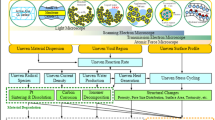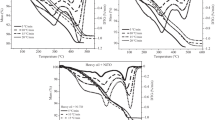Abstract
Experience in use of a computer system for assessing the optimum activity of different industrial catalysts in consideration of the process regime and feedstock composition is described. The system is based on software–implemented physicochemical and kinetic characteristics of conversion of hydrocarbons on Pt catalysts. The effect of the reforming conditions on the catalyst deactivation rate is investigated. Examples are given of its calculation for different units.
Similar content being viewed by others
REFERENCES
G. K. Boreskov, Heterogeneous Catalysis [in Russian], Nauka, Moscow (1988).
A. V. Kravtsov and E. D. Ivanchina, Computer Prediction and Optimization of Gasoline Production [in Russian], STT, Tomsk (2000).
A. V. Kravtsov, E. D. Ivanchina, S. N. Averin, et al., Khim. Tekhnol. Topl. Masel, No. 6, 11-15 (2001).
N. M. Ostrovskii, Kinetics of Deactivation of Catalysts rsn Nauka, Moscow (2001).
Author information
Authors and Affiliations
Rights and permissions
About this article
Cite this article
Kravtsov, A.V., Ivanchina, E.D., Averin, S.N. et al. Activity and Stability of Platinum Reforming Catalysts.Computer Evaluation and Prediction. Chemistry and Technology of Fuels and Oils 40, 176–180 (2004). https://doi.org/10.1023/B:CAFO.0000031900.43317.7f
Issue Date:
DOI: https://doi.org/10.1023/B:CAFO.0000031900.43317.7f




